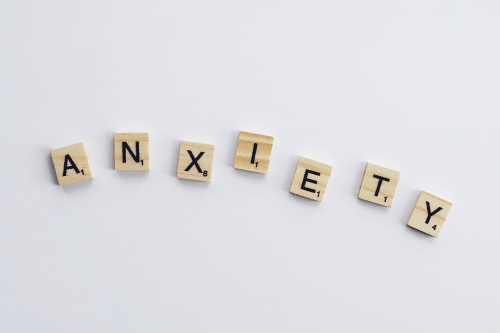Silent Anxiety: Understanding, Coping, and Seeking Support
Silent anxiety, also referred to as a silent panic attack, is a form of anxiety that can be difficult to recognize due to the lack of visible symptoms. Unlike a typical panic attack, silent anxiety often hides beneath the surface, creating a challenging internal experience. This blog explores the nuances of silent anxiety, its symptoms, causes, and the treatment options available to improve your quality of life.
Understanding Silent Anxiety

What Are Silent Anxiety Attacks?
A silent anxiety attack occurs when someone experiences overwhelming feelings of anxiety or intense fear without showing obvious signs of distress, such as shaking, shallow breathing, or outward panic. This type of anxiety is characterized by internal panic attacks, where individuals endure the symptoms without external symptoms being noticeable.
Differentiating Silent Anxiety from Traditional Panic Attacks
The key difference between silent anxiety and a traditional panic attack lies in its covert nature. While traditional panic attacks often present physical signs like a racing heart, shortness of breath, or sweating, silent anxiety may involve an internal sense of panic or a constant fear without external symptoms.
Symptoms of Silent Anxiety
Physical Symptoms
Silent anxiety often includes physical symptoms like:
- Heart palpitations or a rapid heartbeat
- Muscle tension
- Shallow breathing or difficulty catching your breath
- Abdominal distress or nausea
Emotional Symptoms
- Persistent feelings of fear or doom
- Negative thinking and anticipatory worry
- Difficulty focusing on daily tasks due to heightened anxiety
- Intense feelings of detachment or unreality
Causes of Silent Anxiety

Genetic Factors
A genetic predisposition can increase the likelihood of developing silent anxiety, particularly if there is a family history of anxiety disorders or mental health concerns.
Environmental Triggers
Living in a high-stress environment or experiencing stressful life events such as a traumatic event or Adverse Childhood Experiences can trigger silent anxiety.
Psychological Influences
Individuals with high-functioning anxiety, obsessive-compulsive disorder, or a history of post-traumatic stress disorder are more likely to experience silent anxiety. Personality traits, such as perfectionism, also play a significant role.
Prevalence of Silent Anxiety
Statistics and Demographics
While research on silent anxiety is still growing, it’s estimated that a significant portion of individuals with anxiety disorders experience some form of covert panic attacks or limited-symptom panic attacks. Many people with silent anxiety also meet the criteria for generalized anxiety disorder or social anxiety disorder.
Misconceptions About Silent Anxiety
A common misconception is that visible symptoms are necessary for anxiety to be real. This belief often prevents individuals from seeking treatment for mental health conditions, further exacerbating their struggles.
Common Triggers
Stressful Life Events
Major life changes like job loss, relationship difficulties, or financial stress can heighten feelings of anxiety and lead to frequent silent panic attacks.
Social Situations
Social anxiety disorder often contributes to silent anxiety, particularly in settings involving public speaking or meeting new people.
Performance Pressure
The pressure to excel in a professional life or academic setting can create an overwhelming sense of stress, resulting in feelings of panic or distress.
Coping Strategies
Cognitive-Behavioral Therapy (CBT)
CBT is a valuable tool for managing silent anxiety by addressing negative thinking patterns and helping individuals develop healthier coping mechanisms. Behavioral therapy skills like progressive muscle relaxation are also effective.
Mindfulness and Relaxation Techniques
Deep breathing exercises, meditation, and relaxation techniques like progressive muscle relaxation can help calm the body during a silent anxiety attack.
Self-Care Practices
- Regular exercise to lower stress and improve mood
- Limiting stimulants like caffeine, which can exacerbate racing heart or heart palpitations
- Prioritizing sleep to regulate anxiety levels
Treatment Options

Professional Therapeutic Interventions
Therapies such as exposure therapy, dialectical behavior therapy (DBT), and cognitive-behavioral therapy are highly effective in managing silent anxiety.
Medication Approaches
Selective serotonin reuptake inhibitors (SSRIs) are often prescribed to manage symptoms of anxiety and panic disorders, alongside therapy.
Support Groups
Connecting with others through support groups can reduce the feelings of isolation often associated with silent anxiety. Peer groups offer a safe space to share experiences and receive support.
Impact on Daily Life
Effects on Relationships
Silent anxiety can strain personal relationships. The invisible battles of those with silent anxiety may lead to misunderstandings or emotional distance.
Influence on Work and Productivity
Chronic anxiety can affect focus, creativity, and productivity, leading to difficulties in both personal and professional life.
Coping in Social Settings
Those with silent anxiety may avoid social activities or feel discomfort in stimulating environments due to sensory overload or a sense of fear.
Supporting Others with Silent Anxiety
Recognizing Signs in Others
Common signs include avoiding social activities, difficulty maintaining eye contact, or expressing distress through subtle physical signs like a racing heartbeat or physical tension.
How to Offer Support
- Provide a calm presence and a quiet space for them to process their feelings.
- Encourage them to seek mental health counseling or connect with a health care provider.
Importance of Encouragement and Understanding
Offering reassurance and understanding can make a significant difference in helping someone feel validated and supported.
Seeking Professional Help
When to Seek Help
If silent anxiety significantly impacts daily life, relationships, or productivity, it’s crucial to seek treatment for panic disorder or related conditions.
Types of Professionals to Consider
- Mental health professionals such as therapists or counselors
- Psychiatrists for medication management
- Specialized clinics like Montare Behavioral Health or D’Amore Mental Health
Benefits of Therapy and Counseling
Therapy provides effective tools for long-term management of anxiety, improving both mental and physical health while fostering a more fulfilling life.
Silent-anxiety is a common experience that can deeply affect a person’s quality of life, but it doesn’t have to define your journey. With the right treatment options, support, and coping strategies, individuals can manage their symptoms and lead balanced, peaceful lives. If you or someone you know is struggling with silent anxiety, reach out to a trusted mental health service provider today.










